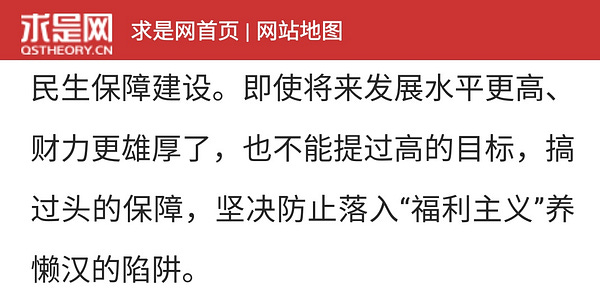Behind the Curtain of Xi's Common Prosperity
Will the elite and the broader population get on board, or will they push back when their own prerogatives are pinched?
Xi Jinping spoke to the Central Financial and Economic Affairs Commission on August 17 on common prosperity. A kerfuffle ensued, capitalists were calmed by soothing words about hard work and tax cuts. Writers like Noah Smith and Tanner Greer wrote about it. A week ago, Qiushi (Seeking Truth) published the speech.1 Adam Ni at Neican helpfully translated it into English.
There are some interesting details that the full speech (*) includes that the earlier reporting didn’t focus on. I tried to put as much as I could into my explainer for the Monkey Cage (TMC) but the format and word limit kept out some material. So, I’m writing this behind the scenes piece.
First, China twitter was having a lot of fun parsing the speech over the weekend. Kaiser Kuo had a nice thread that emphasized the fascinating leftward turn that is mapped out:


This reading is absolutely reasonable and connects with the significant crackdowns that have occurred, and which SupChina keeps track of at its “Red New Deal tracker.” (An alternative headline for my piece was: Xi Jinping wants ‘common prosperity’ in China. Billionaires beware.) The Sinica podcast also had a great episode with Jude Blanchette and Lizzi Lee on this theme a month ago. Lizzi argued that the spate of crackdowns is in large part a result of pent-up demand for actions that were delayed because of the pandemic, while Jude suggested that it was about the political calendar with the 20th Party Congress a year away. Jude and Barry Naughton wrote up that idea for The Wire.
But common prosperity is not the fever dream of tankies finally being realized, Xi putting the communist back in CCP. My Cornell colleague Eli Friedman highlighted some of the real animus to guaranteeing … common prosperity through government supports.


As I mention at TMC, it’s not just an aversion to welfare. Xi emphasized the vital role of China’s entrepreneurs and called for lower taxes on small businesses. The speech has nothing fundamentally anti-capitalist or anti-consumerist. There’s nothing about sacrifice or giving up for the common good (unless you’re uber-rich). Hard work, yes.
These two perspectives contain the promise and limits of common prosperity. It’s a serious endeavor but with real ideological limits. But my former Stanford classmate Yuen Yuen Ang noticed a fascinating detail at the end of the speech that tipped me over into wanting to write the explainer:


Here’s my perspective on this “remarkable admission”:
‘Common Prosperity’ is not a single number
Xi recognized that reaching this complex goal will be difficulty, but he emphasized “it can neither wait nor be rushed.” He did not reveal any details about how he planned to “correctly handle the relationship between efficiency and fairness.”
One interesting section at the end of his speech included an admission of deficiencies in the anti-poverty campaign, one of Xi’s signature victories. As political scientist Yuen Yuen Ang noted, Xi states that pursuing common prosperity is “unlike the poverty eradication campaign” in that “we should not adopt a uniform quantitative target.” Xi expressed real concern that despite the campaign’s hitting its numerical goal, the Chinese government still needed to make sure to “prevent those lifted from poverty from returning to poverty en masse.”
Given that I’m finishing a book about ideology and quantification, this was too good of a detail to pass up.
A few more thoughts.
Common purpose. I don’t get into the “common purpose” side of things, and Xi’s speech didn’t really either. [Here’s an interesting essay that tries to do so.] There’s a tiny bit in the initial paragraphs, but the fifth (of 6) sections includes this (Neican’s translation):
We must strengthen the guidance of the Socialist Core Values, and education on patriotism, collectivism and socialism. We must develop [our] public culture enterprise, improve the public culture service system, and continuously meet the diverse, multi-levelled, and multi-faceted spiritual, moral and cultural needs of the people.
Contradict yourself much? The party-state needs to strengthen ideological guidance but simultaneously “continuously meet the diverse, multi-levelled, and multi-faceted spiritual, moral and cultural needs of the people”??? It’s obvious but, tell that to the people of Xinjiang. Or house churches or FLG supporters. Or even labor organizers or feminists or rights lawyers. Lots of people with ideas about how to make meaning in their lives have been squashed by an increasingly coercive regime.
Where does ‘common prosperity’ come from? It’s become a Xi-ism but the excellent Karrie Koesel found discussion of it in the 1990s in her dataset of gaokao materials. The 1994 exam include the following question paired with the answer key.
The basic point is “common prosperity” refers to prosperity of everyone, while “first prosperity” refers to allowing and encouraging some regions and individuals to prosper first. As China has become richer, the country can now shift focus to considering “common prosperity.” Of course, no lazy people though.
Where is this heading? It remains unclear how far this movement will go. As I argued, this and similar diagnoses have been around for a long time (e.g. Wen’s Four Uns). Real, costly actions are being undertaken, but the real estate-led growth model has deep connections to the cadre evaluation system, local government financing, household wealth, cadre power (and corruption), and more. And as of today, it looks like Evergrande pulled a rabbit out of a hat. That’s a metaphor, they pulled $83.5 million dollars out of some accounts and made a coupon payment that was due 29 days ago. Keeping around zombie firms is an unlikely path to common prosperity.
As always, the extent to which it was post-hoc edited is unclear.




